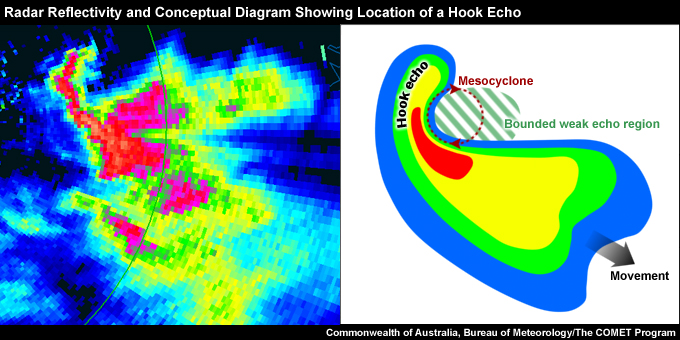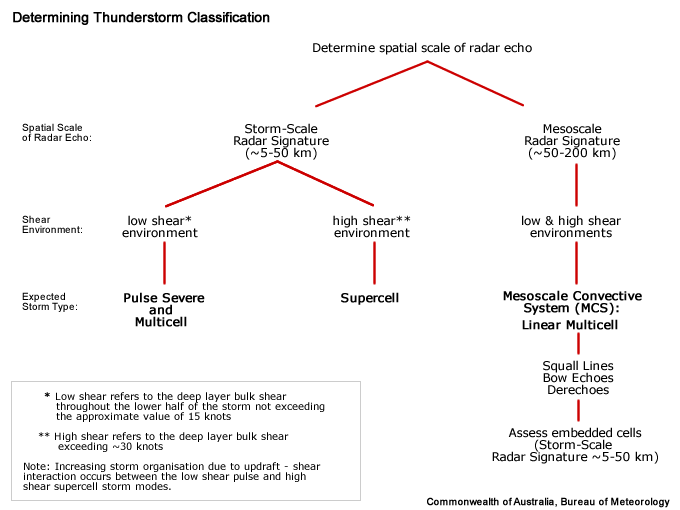Conceptual Model
A Hook Echo is used as one of many signatures suggesting a severe thunderstorm (usually a supercell). The presence of a Hook Echo often indicates the thunderstorm possesses a very strong, rotating updraft.
The Hook Echo is a well researched radar reflectivity signature, although the formation of the hook is still under investigation. Early research by Fujita (1958) hypothesized that the Hook Echo formed as precipitation was advected around a supercell's rotating updraft, though more recent research has shown the formation is not this simple. Hydrometeors fall relative to the ambient air, therefore Hook Echoes must involve descending precipitation curtains (Byko et. al., 2009). The latest theory involves a "descending reflectivity core (DRC)" at the rear of the weak-echo region (Rasmussen et.el., 2006). The descending precipitation occurs on the rear flank of the updraft and could be seen as a low-level "extension" of the Bounded Weak Echo Region (BWER) (Les Lemon, personal communication, 2010). Commonly, it is believed that the descending precipitation interacts with the storm's mesocyclone so that it is descending along an arc.
The presence of a Hook Echo suggests a supercellular thunderstorm. Supercells increase the chance of any of the four severe convective hazards occurring: damaging or destructive winds, large or giant hail, heavy rainfall resulting in flash flooding, and tornadoes. A common belief is that the presence of a Hook Echo also increases the chances of the thunderstorm producing a tornado, although now there are recent claims that Hook Echoes are no better at indicating a tornadic storm than the presence of a mesocyclone (Markowski, personal communication, 2010).

Radar reflectivity from Badgeries Creek (NSW), Australia, 0500 UTC 03 November 2000, compared to a conceptual image showing location of Hook Echo.
Determining Thunderstorm Classification
Hook Echoes are most associated with supercell thunderstorms. To help determine the classification of the thunderstorm you are observing, use the following flow chart to help diagnose which thunderstorm conceptual model you should consider more closely.

See Supercell for more information.
